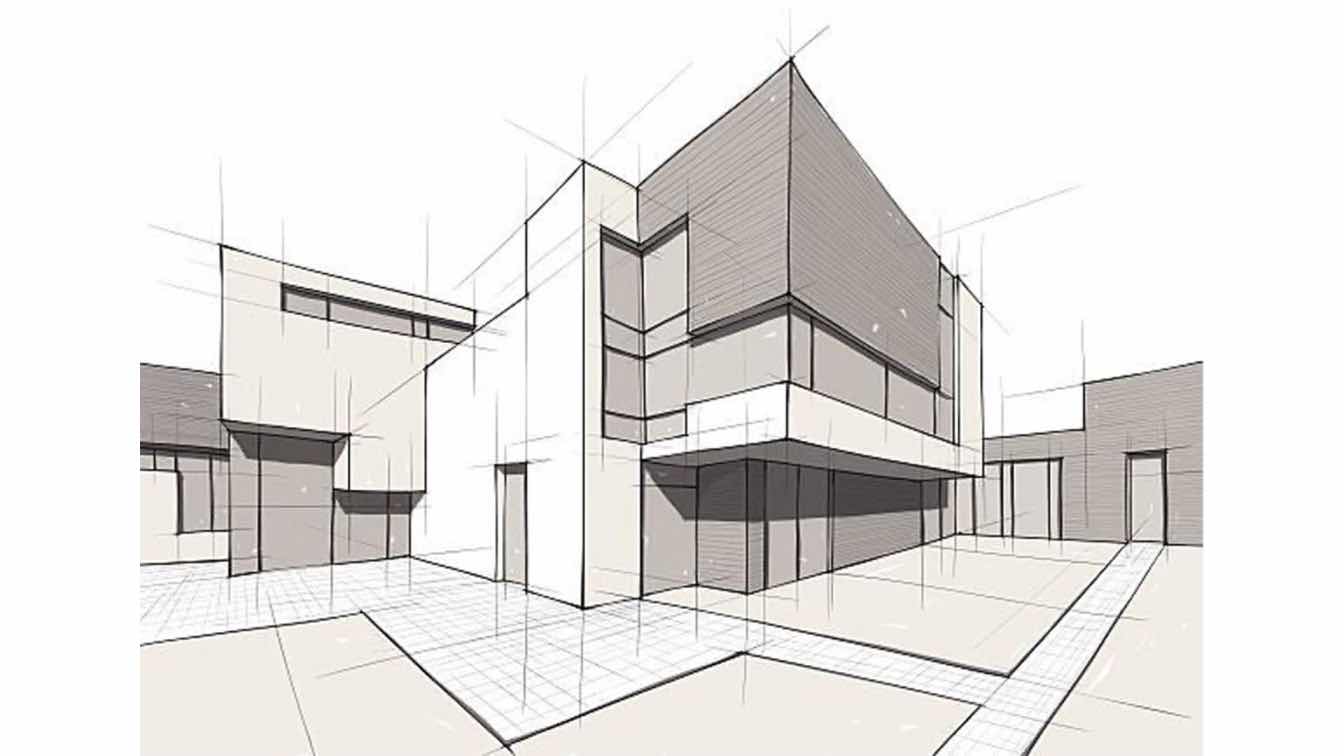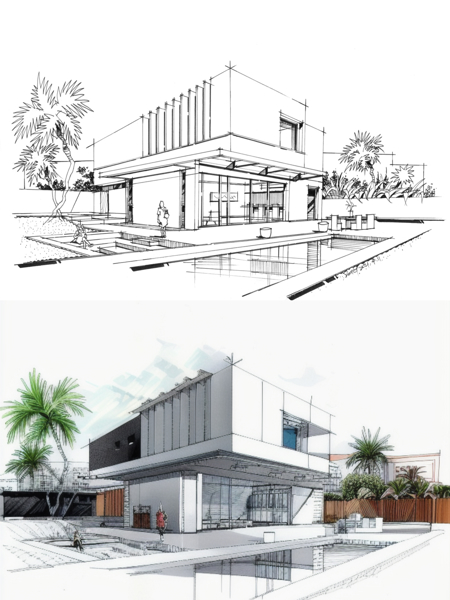The Impact of Technical Developments on the Style Practices of Contemporary Architects
The rapid evolution of technical devices has substantially reshaped the design landscape for contemporary engineers, cultivating unmatched levels of technology and sustainability. The combination of Structure Info Modeling (BIM), parametric design, and fabricated intelligence has not just streamlined partnership amongst diverse groups however additionally redefined project implementation. However, as engineers embrace these improvements, they are confronted with complicated obstacles that might influence their creative procedures. Exploring these characteristics discloses a nuanced interplay between modern technology and traditional style techniques, prompting a better assessment of what the future holds for building practices.
Advancement of Architectural Devices
How have architectural devices changed the layout and construction processes over the centuries? The evolution of architectural tools has actually significantly impacted the efficiency, precision, and creative thinking of layout and building and construction. In ancient times, architects count on basic instruments such as plumb bobs, measuring poles, and standard geometry to produce structures. These devices laid the foundation for very early building method, enabling the building of iconic structures, albeit with constraints in precision and complexity.
With the arrival of the Renaissance, the intro of the compass and the protractor marked a pivotal change. These tools enabled engineers to achieve better accuracy in their designs, facilitating the development of even more complex and proportionate structures (cda architects). The Industrial Revolution better reinvented building practice with the intro of mechanized devices and materials, enabling for larger and a lot more ambitious jobs
In the 20th century, the growth of computer-aided layout (CAD) software program transformed the landscape once more, providing designers with extraordinary abilities in modeling and visualization. Today, progressed devices such as Structure Details Modeling (BIM) and parametric layout software proceed to press the boundaries of building innovation, enabling an extra integrated method to layout and construction processes.

Improved Cooperation in Design
As modern technology continues to develop, boosted partnership in design has actually come to be a foundation of modern building method. The integration of electronic tools such as Structure Information Modeling (BIM), cloud-based systems, and progressed visualization software application has changed the means engineers, engineers, and stakeholders engage throughout the design procedure. These tools assist in real-time communication, permitting teams to share concepts, adjustments, and feedback immediately, despite geographical location.
In addition, virtual truth (VIRTUAL REALITY) and augmented reality (AR) have additional enriched collaborative efforts by making it possible for immersive experiences that allow customers and team participants to imagine tasks in a more appealing manner. This level of communication not only improves understanding however also cultivates a sense of ownership amongst stakeholders, leading to more educated decision-making.
In addition, interdisciplinary collaboration has been structured through these technological innovations, enabling designers to function extra closely with other experts, such as urban organizers and ecological consultants. The result is a much more natural strategy to design that thinks about numerous point of views and knowledge. Eventually, improved cooperation in style is not just a fad; it is essential for developing ingenious, functional, and visually pleasing design in a progressively complicated globe.
Sustainability With Innovation
Sustainability in design has actually progressively ended up being intertwined with technological innovation, driving the industry toward environmentally liable techniques - cda architects. Contemporary engineers are leveraging innovative modern technologies to reduce environmental impact while boosting the efficiency of structures. One famous example is the use of Building Details Modeling (BIM), which enables precise planning and source appropriation, minimizing waste during building and promoting power effectiveness throughout a building's lifecycle
Additionally, wise materials and energy-efficient systems are being incorporated right into styles to optimize source usage. Technologies such as photovoltaic cells and green roof covering systems harness renewable resource resources, adding to decreased carbon impacts. Furthermore, the application of expert system in design procedures makes it possible for designers to simulate and assess energy intake, assisting decisions towards even more sustainable end results.
The assimilation of sustainable innovations not just lines up with global ecological goals yet likewise meets a raising demand from customers for environment-friendly solutions. As designers embrace these technologies, the focus moves towards creating rooms that are not only cosmetically pleasing but additionally functionally special info sustainable, thereby redefining the criteria of modern design. This way, innovation offers as a catalyst for sustainability, allowing engineers to develop structures that regard and improve the all-natural setting.
Challenges in Application
While technical advancements in design hold wonderful guarantee for improving sustainability, their application often comes across significant challenges. One main challenge is the high understanding curve associated with new innovations. Designers and building and construction specialists might require extensive training to efficiently use sophisticated software program and tools, which can delay job timelines and enhance expenses.
Furthermore, the combination of emerging innovations, such as Building Info Modeling (BIM) and sustainable products, usually demands cooperation across multidisciplinary groups. This partnership can be impeded by differences in know-how, process, and communication designs, resulting in possible conflicts and inadequacies.
Financial restrictions even more complicate the fostering of cutting-edge innovations. Many architectural firms, specifically smaller sized ones, may do not have the sources to spend in sophisticated tools, limiting their capacity to contend with bigger firms that can afford such financial investments.
Furthermore, regulatory frameworks and building regulations may not maintain speed with technological developments, developing obscurity and prospective conformity concerns. This challenge can inhibit engineers from completely accepting new modern technologies, as the danger of non-compliance might outweigh the benefits. Consequently, attending to these application challenges is critical for the successful integration of technological advancements in contemporary building methods.
Future Patterns in Style
The obstacles linked with the execution of brand-new modern technologies in style have motivated a reevaluation of future trends within the market. As architects browse issues such as sustainability, urbanization, and social equity, they are progressively embracing ingenious technologies to enhance style performance and environmental performance.
One prominent pattern is the integration of man-made intelligence (AI) in the style process. AI devices can examine vast datasets to inform design decisions, improving both creative thinking and functionality. Building Info Modeling (BIM) proceeds to progress, allowing real-time cooperation amongst stakeholders and helping with structured job administration.
Sustainable style methods are likewise getting momentum, with designers concentrating on flexible reuse and regenerative style concepts that lessen source consumption and waste. The unification of wise products and eco-friendly power resources will certainly even more boost the strength of structures in the face of climate change.
In addition, the surge of parametric style permits more personalized and context-sensitive architectural remedies. my latest blog post By utilizing these developments, architects are poised to create constructed settings that not just deal with the prompt requirements of society but also anticipate future difficulties, thereby redefining the function of design in an ever-changing globe.
Conclusion

Comments on “The Creative Process Behind Effective Tasks from CDA Architects”